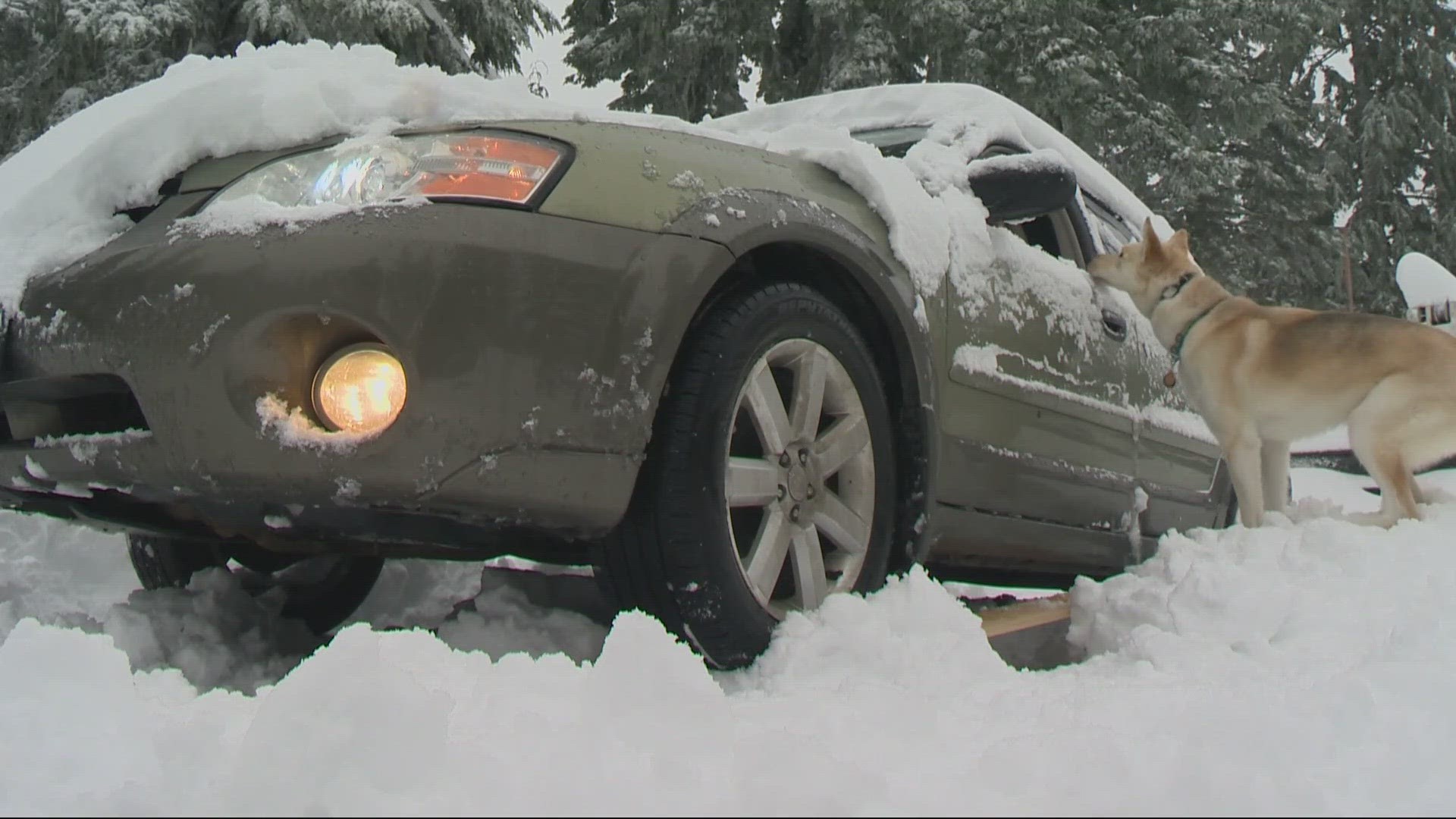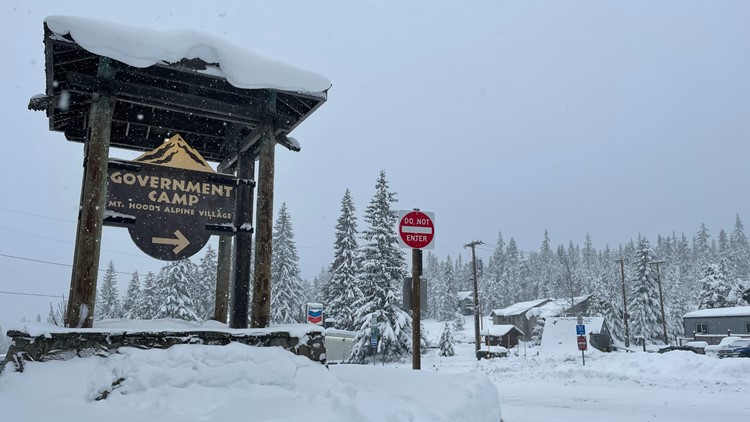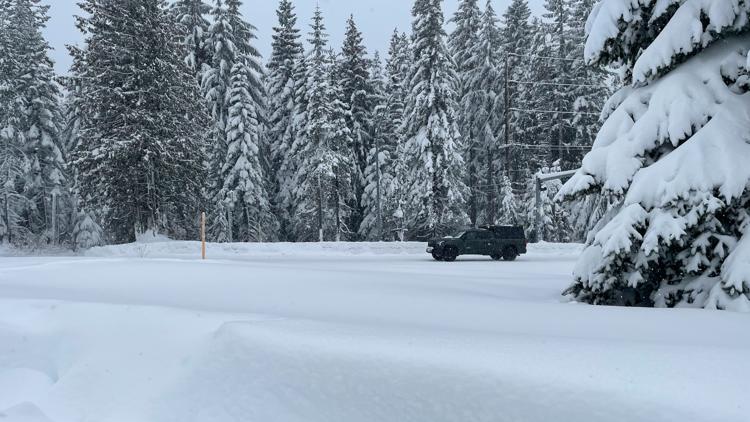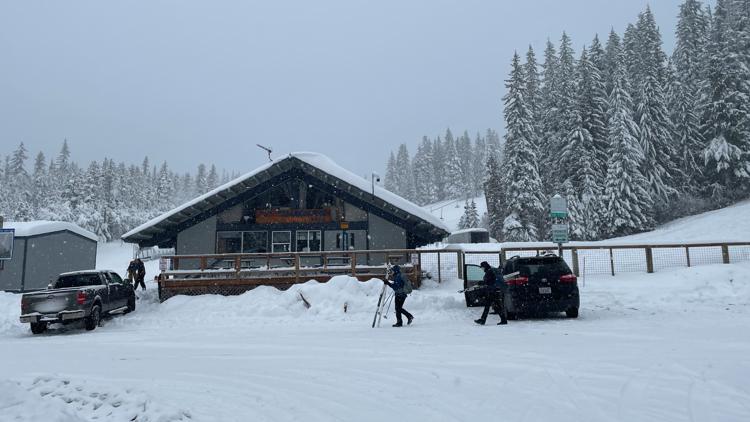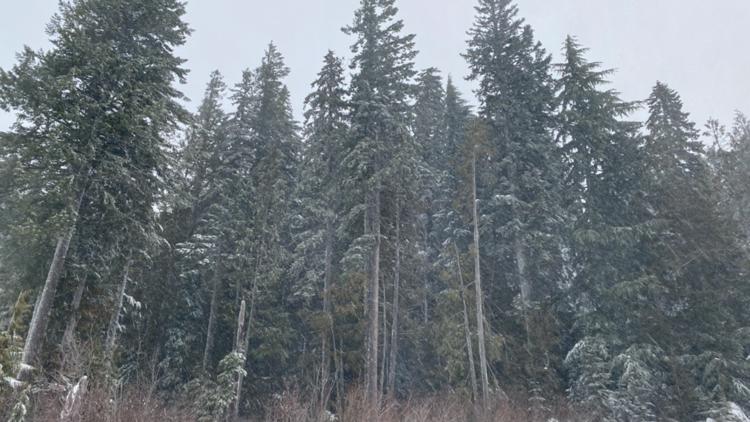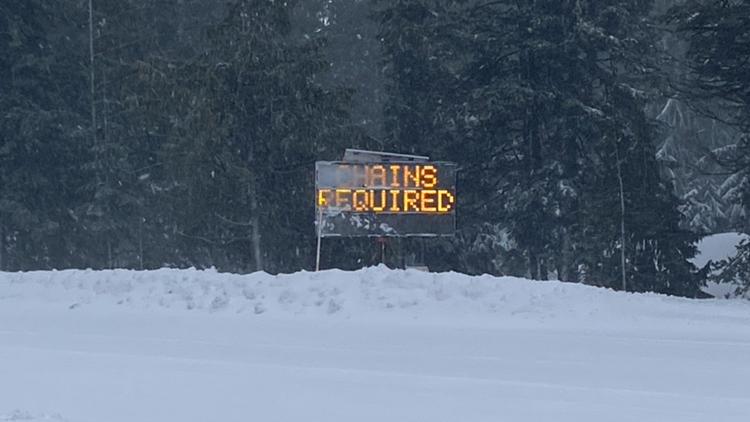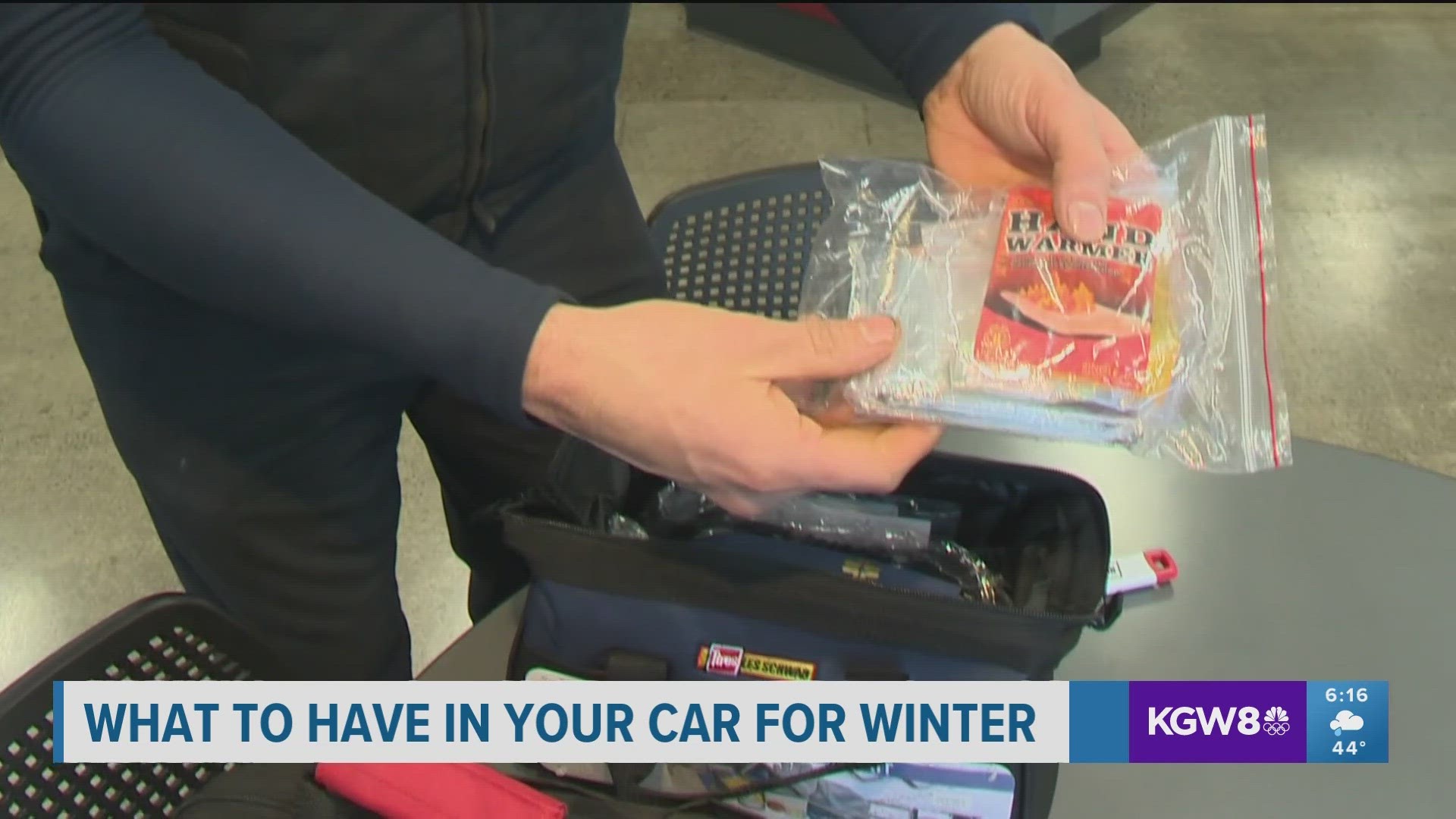PORTLAND, Ore. — Oregon ski resorts closed operations on Tuesday due to a blizzard warning in effect over the Cascades, calling for wind gusts of up to 55 mph. Mount Hood Meadows, Timberline and Ski Bowl have all closed lift operations, citing the winter storm conditions.
Around 20 to 40 inches of snow is expected to fall on the mountain passes through Wednesday. The blizzard warning is for areas higher than 3,000 feet, where visibility is expected to be near zero at times.
Government Camp, which sits at around 4,000 feet, woke up to about a foot of snow, with heavy snow showers most of Tuesday afternoon. Overnight, some locations near Government Camp could see up to more than a foot of snow.
"With great storms come great responsibility and we have made the decision to suspend operations... January 9," Mt Hood Meadows posted on Instagram.
PHOTOS: Government Camp snow
As of Thursday evening, Highways 26, from Mt. Hood to Warm Springs, and 97, from Maupin Junction and Shaniko, have closed due to extreme wind, downed trees and spinouts, according to the Oregon Department of Transportation. The agency warned people should avoid travel if possible.
People should avoid traveling over the mountain passes on Tuesday and Wednesday unless absolutely necessary. But for those that do, here's what American Red Cross suggests people prepare now in case you get stranded in your car or in your home:
WINTER DRIVING EMERGENCY KIT
- Jumper cables
- First aid kit
- Ice scraper
- Extra hats (wool, if possible)
- Extra jackets and gloves
- Extra socks
- Extra sets of dry clothing
- Snacks (canned fruits, nuts, high-energy snacks)
- Several bottles of water
- Warm broth in a thermos
- Fully charged cell phone OR a two-way radio
- Cell phone charger
- Blankets or sleeping bags
- Newspapers (for insulation)
- Plastic bags (for sanitation)
IF YOU GET STRANDED
What if you do get stranded? What should you do?
Here's the complete list the Red Cross provides on its website for what drivers should do if they get stranded inside their car in a winter storm:
- Stay in the vehicle and wait for help. Do not leave the vehicle to search for assistance unless help is visible within 100 yards (91 meters). You can quickly become disoriented and confused in blowing snow.
- Display a trouble sign to indicate you need help. Hang a brightly colored cloth (preferably red) on the radio antenna and raise the hood after snow stops falling.
- Run the engine occasionally to keep warm. Turn on the engine for about 10 minutes each hour (or five minutes every half hour). Running the engine for only short periods reduces the risk of carbon monoxide poisoning and conserves fuel. Use the heater while the engine is running. Keep the exhaust pipe clear of snow, and slightly open a downwind window for ventilation.
- Leave the overhead light on when the engine is running so that you can be seen.
- Do light exercises to keep up circulation. Clap your hands and move your arms and legs occasionally. Try not to stay in one position for too long.
- If more than one person is in the vehicle, take turns sleeping. If you are not awakened periodically to increase body temperature and circulation, you can freeze to death.
- Huddle together for warmth. Use newspapers, maps, and even the removable floor mats for added insulation. Layering items will help trap more body heat.
- Watch for signs of frostbite and hypothermia. Severe cold can cause numbness, making you unaware of possible danger.
- Drink fluids to avoid dehydration, which can make you more susceptible to the ill effects of cold and to heart attacks.
- Avoid overexertion. Cold weather puts an added strain on the heart. Shoveling snow or pushing a vehicle can bring on a heart attack or make other medical conditions worse.
EMERGENCY KIT AT HOME
In addition to a winter driving emergency kit, you should have an emergency survival kit in your home in the case of any weather-related disaster. Here’s the full list from the Red Cross of what you should have in your survival kit at home:
- Water: one gallon per person, per day
- Food: non-perishable, easy-to-prepare items
- Flashlight
- Battery-powered or hand-crank radio (NOAA Weather Radio, if possible)
- Extra batteries (Similar item available in the Red Cross Store)
- Deluxe family first aid kit
- Medications (7-day supply) and medical items
- Multi-purpose tool
- Sanitation and personal hygiene items
- Copies of personal documents (medication list and pertinent medical information, proof of address, deed/lease to home, passports, birth certificates, insurance policies)
- Cell phone with chargers
- Family and emergency contact information
- Extra cash
- Emergency blanket
- Map(s) of the area
Consider the needs of all family members and add supplies to your kit:
- Medical supplies (hearing aids with extra batteries, glasses, contact lenses, syringes, etc.)
- Baby supplies (bottles, formula, baby food, diapers)
- Games and activities for children
- Pet supplies (collar, leash, ID, food, carrier, bowl)
- Two-way radios
- Extra set of car keys and house keys
- Manual can opener

